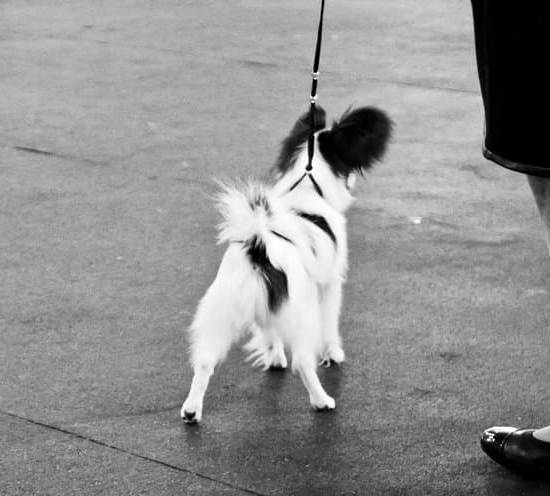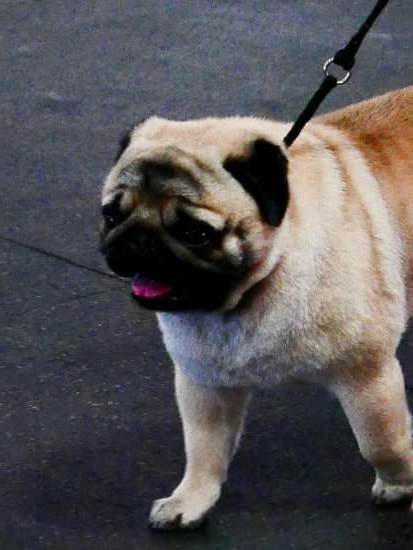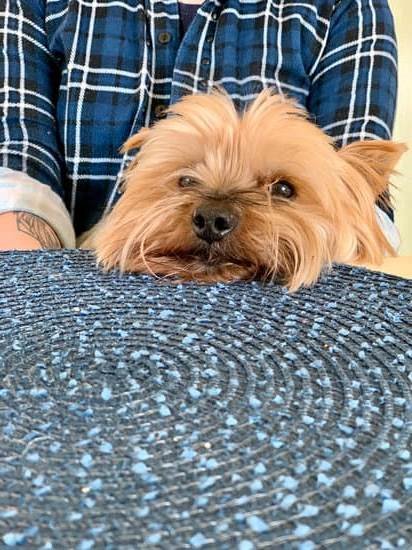Potty training is one of the most important skills you can teach your dog. Not only does it ensure a clean and hygienic living environment, but it also fosters a strong bond between you and your furry friend.
However, many pet owners find themselves struggling to potty train their dogs successfully. If you’re wondering how to get your dog potty trained, this article will provide you with valuable insights, techniques, and tips to make the process as smooth and efficient as possible.
Potty training serves more than just eliminating the messes from your home. It helps establish boundaries and teaches your dog self-control. By understanding the importance of potty training, you’ll be motivated to invest time and effort into this necessary skill for both your sake and your dog’s well-being.
In this comprehensive guide, we will delve into various aspects of potty training, starting with understanding dog psychology and learning behaviors related to potty training. We will then explore how to set up your home for successful potty training, including utilizing crate training as a tool. Establishing a routine and using positive reinforcement techniques will also be discussed as key elements for consistency and success in potty training.
Whether you’re a new dog owner or have been struggling with potty training for some time now, this article aims to equip you with the knowledge and strategies necessary to overcome common challenges. From troubleshooting persistent problems to offering tips for long-term maintenance, we’ve got you covered. So let’s dive in and discover how to achieve potty training success that lasts a lifetime.
The Basics
Potty training your dog is an essential part of its overall training and development. Before diving into the specifics of potty training, it’s important to understand the basics of dog psychology and learning behaviors that are related to this process. By gaining insight into how dogs think and learn, you can better tailor your approach to potty training and set yourself and your furry friend up for success.
One key aspect of dog psychology is their instinctual preference for cleanliness. Dogs naturally want to keep their living spaces clean and will try their best to avoid soiling them. Understanding this instinctual behavior can be advantageous when teaching your dog where it is appropriate to eliminate waste.
Additionally, dogs have a keen sense of smell which plays a crucial role in their bathroom habits. They tend to prefer eliminating in areas that already have the scent of urine or feces as it helps them identify it as an appropriate spot. This behavior can be utilized when selecting a designated potty area for your dog.
In terms of learning behaviors, dogs respond well to positive reinforcement techniques during training. This involves rewarding good behavior with treats, praise, or playtime. Consistently rewarding your dog when they eliminate in the desired designated area will reinforce this behavior and encourage them to continue doing so.
To effectively potty train your dog, it is important to be aware of these basic principles related to dog psychology and learning behaviors. Understanding why dogs behave the way they do will help you tailor your training methods accordingly and make the process smoother and more successful for both you and your beloved pet.
Setting the Foundations
Preparing Your Home Environment
When it comes to potty training your dog, setting the right foundations in your home is crucial. Creating an environment that supports successful potty training will greatly facilitate the process for both you and your furry friend. Here are some key steps to take when preparing your home for potty training success:
Designate a specific potty area
One of the first steps in setting the foundations for potty training is designating a specific area in your home where you want your dog to do their business. This could be a section of your yard, a litter box, or even puppy pads placed strategically indoors. By providing a consistent and designated spot for them to relieve themselves, you are helping them understand what is expected of them.
Remove any potential hazards
Before bringing your dog into your home, it’s important to make sure that there are no temptations or hazards that can interfere with their potty training progress. Securely store cleaning supplies, electrical cords, and other potential dangers that might attract their curiosity and distract them from focusing on their potty habits.
Limit unsupervised access
In the early stages of potty training, it’s important to limit your dog’s access to the entire house unless they are supervised closely. By gradually expanding their access over time as they demonstrate consistent potty training behavior, you can prevent accidents from happening in areas where they have not yet learned appropriate bathroom etiquette.
Invest in cleaning supplies
Accidents are bound to happen during the potty training process, so it’s essential to be prepared with proper cleaning supplies designed specifically for pet messes. Enzymatic cleaners can help eliminate odors and stains effectively and discourage future accidents in the same spot.
By taking these steps to prepare your home environment for successful potty training, you are setting the foundations for a positive and consistent learning experience for your dog. Investing time and effort in creating an optimal environment will greatly contribute to their overall potty training success. Stay committed, patient, and consistent, and soon enough, your furry friend will master this necessary skill.
Crate Training
Crate training is a valuable tool when it comes to potty training your dog. Dogs are naturally den animals, and crates provide them with a safe and secure “den” where they can feel comfortable. By using a crate as part of the potty training process, you can create a positive association between the crate and good potty behavior.
To effectively utilize crate training for potty training, there are a few key steps to follow:
- Choose the right size crate: The crate should be large enough for your dog to stand up, turn around, and lay down comfortably. However, it shouldn’t be so big that your dog has extra space where they can go potty without soiling their sleeping area.
- Introduce the crate gradually: Start by allowing your dog to explore the crate on their own terms. Place treats or toys inside to encourage them to enter willingly. Avoid forcing them into the crate or using it as a form of punishment.
- Use positive reinforcement: When your dog voluntarily enters the crate, praise and reward them with treats or verbal affirmations. This will help them associate the crate with positive experiences.
- Establish a routine: Set specific times for when your dog goes in and out of the crate, such as during meal times or before bedtime. Consistency is key in potty training, so sticking to a routine will help reinforce good habits.
- Gradually increase time spent in the crate: Initially, keep your dog in the crate for short periods while you supervise them closely. As they become more comfortable, gradually increase their time inside while ensuring they have regular breaks for playtime and bathroom breaks.
Remember that crates should never be used as a means of long-term confinement or punishment for your dog. It should be seen as their personal sanctuary rather than just a tool for potty training. With patience and consistency, crate training can significantly aid in successfully potty training your dog.
Establishing a Routine
Establishing a routine is crucial for consistency and success in potty training your dog. Dogs are creatures of habit, and having a set schedule will not only make it easier for you to anticipate their needs but also help your dog understand when and where they should relieve themselves. Here are some steps you can take to establish a routine for potty training:
- Determine the appropriate potty schedule: Puppies typically need to go outside immediately after waking up, after meals, and before bedtime. Adult dogs may follow a similar schedule or require fewer bathroom breaks throughout the day. Determine the frequency at which your dog needs to go outside based on their age, size, and health condition.
- Take them outside at consistent times: Choose specific times of the day when you will take your dog outside to relieve themselves. This could be right after meals or on an hourly basis if necessary. The key is to be consistent with these times so that your dog can learn to anticipate when they should go.
- Designate a potty area: Select a specific spot in your yard where you want your dog to do their business. Take them directly to this area every time you let them out during potty training sessions. This will help them form an association between that spot and going potty.
To ensure success with establishing a routine, consider implementing the following strategies:
- Keep track of your dog’s eating and drinking patterns as this will affect their bathroom needs.
- Use verbal cues such as “go potty” or “do your business” consistently while they are eliminating.
- Gradually increase the length of time between bathroom breaks as your dog becomes more reliable in holding their bladder.
- Be patient with accidents that may occur during the early stages of training and avoid punishing or scolding your dog as this can create anxiety around going potty.
By following these guidelines, you can establish a solid routine that will promote consistency and success in potty training your dog. Remember to be patient and consistent, as every dog learns at their own pace. With time and practice, they will develop good bathroom habits and become fully potty trained.
Positive Reinforcement
When it comes to potty training your dog, positive reinforcement can be a highly effective and rewarding technique. By rewarding your dog for exhibiting good behavior, you can encourage them to continue making progress in their potty training journey.
One of the most common and effective ways to use positive reinforcement in potty training is through the use of treats. After your dog successfully uses the designated potty area, immediately reward them with a small treat and give them verbal praise. This helps to create a positive association between using the correct spot and receiving a reward.
In addition to treats, you can also use other forms of rewards such as verbal praise, petting, or playtime. Some dogs may respond better to certain forms of rewards than others, so it’s important to find what motivates your individual canine companion. Consistency is key – make sure to consistently reward your dog for successful potty behaviors to reinforce their understanding of what is expected.
It’s important to note that timing is crucial when using positive reinforcement. Make sure to deliver the reward immediately after your dog exhibits good behavior so they associate it with that specific action. Delaying the reward may confuse your dog and weaken the association between the behavior and the reward.
Overall, positive reinforcement is an effective way to encourage good behavior during potty training. By using treats or other rewards consistently and immediately after your dog exhibits desired behaviors, you can reinforce their understanding of what is expected and motivate them to continue making progress.
Examples
| Reward | Description |
|---|---|
| Treats | A small piece of food that your dog enjoys such as a training treat or kibble. |
| Verbal Praise | A positive and enthusiastic response using words such as “good job” or “well done”. |
| Petting | Gently stroking your dog’s fur and praising them with a calm voice. |
| Playtime | Allowing your dog to engage in their favorite play activities as a reward. |
Common Mistakes to Avoid
Introduction
Potty training a dog can be a challenging process, especially for first-time dog owners. It requires patience, consistency, and an understanding of your dog’s behavior and learning patterns. While there are effective techniques to achieve successful potty training, it is equally essential to be aware of common mistakes that could hinder the progress. By being proactive and avoiding these pitfalls, you can ensure a smoother and faster potty training process for your furry friend.
Lack of Consistency
Consistency is key when it comes to potty training. One common mistake many dog owners make is not being consistent in their approach. Dogs thrive on routine, so it is crucial to establish a consistent schedule for feeding, walks, and bathroom breaks. Take your dog outside at regular intervals throughout the day, especially after meals or playtime. By sticking to a routine, you create a predictable environment for your dog to understand when it’s time to eliminate.
Another aspect of consistency is using the same designated spot or area outdoors for your dog to go to the bathroom. This helps reinforce the association between that location and elimination. Avoid changing the area frequently as it may confuse your dog and prolong the potty training process.
Punishment and Negative Reinforcement
Punishing your dog for accidents or mistakes during potty training can have detrimental effects on their progress. Yelling at or scolding your dog can make them anxious or fearful about going to the bathroom in front of you, which may lead to them hiding accidents or becoming reluctant to eliminate outside.
Instead of punishment, focus on positive reinforcement by rewarding desired behaviors. When your dog successfully eliminates outside, praise them enthusiastically and offer treats or verbal affirmations as rewards. This positive reinforcement not only encourages good behavior but also strengthens the bond between you and your furry friend.
Inadequate Supervision
Leaving your dog unsupervised, particularly during the early stages of potty training, can result in accidents. It is important to closely monitor your dog’s behavior and establish a routine of frequent bathroom breaks. Keep an eye out for signs that your dog needs to go, such as sniffing or circling, and quickly take them outside.
If you are unable to supervise your dog throughout the day, consider using a crate or confining them to a small, designated area with puppy pads. This helps prevent accidents and reinforces the idea that there is a specific place for elimination.
By avoiding these common mistakes and implementing proper potty training techniques consistently, you can set your dog up for success and achieve quicker results in their potty training journey. Remember to be patient, reward good behavior, and provide plenty of opportunities for your furry friend to succeed.
Troubleshooting
Persistent potty training problems can be frustrating for both you and your dog. However, it’s important to remain patient and understand that accidents happen during the learning process. In this section, we will discuss common potty training problems and provide solutions to help overcome them.
Frequent Accidents
If your dog is having frequent accidents despite your efforts, it may be necessary to reassess your approach. Start by ensuring that you are providing enough opportunities for your dog to go outside to eliminate. Increase the frequency of bathroom breaks, especially after meals, naps, or playtime. Additionally, keep a close eye on your dog and watch for signs of restlessness or sniffing around, which could indicate they need to relieve themselves.
Consistency is key when it comes to potty training. Make sure you are consistently using the designated outdoor area for elimination and rewarding your dog when they go in the appropriate spot. If accidents do occur inside the house, avoid punishment as it can create anxiety and hinder the learning process. Instead, clean up accidents thoroughly with an odor-neutralizing cleaner to prevent lingering smells that may attract your dog back to those areas.
Regression in Training
It’s not uncommon for dogs to experience regression in their potty training progress. This can happen due to various reasons such as changes in routine, stress, or health issues. If you notice that your previously trained dog is suddenly having accidents indoors again, it’s essential to identify the underlying cause.
Firstly, evaluate any recent changes in the household or routine that could be causing stress or anxiety for your dog. It may be helpful to gradually introduce new changes and monitor their reaction closely.
Take note of any potential health issues by consulting with a veterinarian if necessary. Certain medical conditions like urinary tract infections or gastrointestinal issues can lead to increased accidents.
In cases of regression, consider going back to the basics of potty training and reinforcing the foundations. Reestablish a consistent routine, provide ample opportunities for outdoor elimination, and use positive reinforcement techniques to reward desired behavior.
Excitement or Submissive Urination
Excitement urination or submissive urination can often be mistaken for potty training problems. Excitement urination occurs when a dog gets overly excited, leading to involuntary urine leakage. Submissive urination, on the other hand, is a submissive gesture displayed by dogs in response to perceived dominance or submission.
To address excitement urination, it’s important to manage your dog’s environment and avoid situations that trigger excessive excitement. Keep greetings low-key and ensure your dog has plenty of opportunities to empty their bladder before exciting events, such as visitors arriving.
Submissive urination can be managed by creating a calm and supportive environment for your dog. Avoid any actions or behaviors that may be interpreted as dominant or intimidating. Instead, focus on positive reinforcement and gradually build your dog’s confidence through training exercises.
Remember that these issues are different from potty training accidents and may require specialized training techniques specific to each problem. Consulting with a professional trainer or behaviorist can provide you with expert guidance tailored to your dog’s needs.
Long-Term Maintenance
After successfully potty training your dog, it is essential to establish a maintenance routine to ensure long-term success. Here are some tips for maintaining potty training success in the future:
- Consistency is key: Continue to maintain a consistent schedule for feeding, walking, and bathroom breaks. Dogs thrive on routine, and by sticking to a set schedule, you can prevent accidents and reinforce good behavior.
- Regular exercise: Providing your dog with regular exercise not only promotes their overall health but also helps prevent accidents indoors. Regular physical activity helps regulate your dog’s bowel movements, reducing the chances of them needing to go when they are inside.
- Supervision and confinement: It is important to continue supervising your dog, especially during the initial stages of long-term maintenance. If you cannot directly supervise your dog, confine them to a safe area or use baby gates to block off certain rooms in the house. This prevents them from having unsupervised access to areas where accidents may occur.
- Keep an eye out for signs: Dogs often exhibit specific signs when they need to relieve themselves, such as sniffing around or circling a certain spot. Pay attention to these cues and immediately take your dog outside if you notice any of these behaviors.
- Maintain positive reinforcement: Even after potty training is complete, it is crucial to continue using positive reinforcement techniques to reinforce good behavior. Praise and reward your dog every time they eliminate in the appropriate spot outside. This will help solidify their understanding of where they should go.
- Clean up accidents thoroughly: Accidents happen, especially during the maintenance phase of potty training. It is crucial to clean up any accidents thoroughly using an enzymatic cleaner specifically designed for pet stains and odors. Regular household cleaners may not fully remove the scent of urine or feces, which could lead your dog back to that spot again.
By following these tips for maintaining potty training success, you can ensure that your dog continues to have good bathroom habits and prevents any regression in their training.
Long-Term Maintenance: Tips for Maintaining Potty Training Success in the Future
| Tip | Description |
|---|---|
| Consistency is key | Maintain a consistent schedule for feeding, walking, and bathroom breaks. |
| Regular exercise | Provide regular exercise to help regulate bowel movements. |
| Supervision and confinement | Supervise or confine your dog to prevent unsupervised access to areas where accidents may occur. |
| Keep an eye out for signs | Pay attention to your dog’s behavior and take them outside immediately if they show signs of needing to relieve themselves. |
| Maintain positive reinforcement | Continue praising and rewarding your dog for eliminating in the appropriate spot outside. |
| Clean up accidents thoroughly | Use enzymatic cleaners designed for pet stains and odors to properly remove any accidents. |
Frequently Asked Questions
One of the most important aspects of potty training your dog is understanding and addressing common concerns and queries that may arise throughout the process. In this section, we will address some frequently asked questions to help you navigate any challenges you may face during potty training.
- Q: How long does it take to potty train a dog?
- A: The duration of potty training can vary depending on several factors, including your dog’s breed, age, and individual temperament. On average, it takes about 4-6 months to fully potty train a dog. However, some dogs may catch on quicker while others may require more time. Consistency, patience, and positive reinforcement are key to successfully potty training your dog.
- Q: What if my dog has accidents indoors?
- A: Accidents are a normal part of the learning process during potty training. It is important not to punish or scold your dog when accidents occur, as this can create fear or anxiety around elimination. Instead, calmly clean up the mess and reinforce positive behavior by taking your dog outside immediately after cleaning up. Gradually increase supervision indoors and reward your dog for eliminating in the appropriate spot outside.
- Q: How do I prevent my dog from marking inside the house?
- A: Marking behavior in dogs is different from eliminating behavior associated with potty training. To prevent marking indoors, it is important to first ensure that your dog is fully neutered or spayed if they are not already.
Additionally, proper supervision and management techniques such as using a crate or keeping your dog confined to certain areas of the house can help prevent marking behaviors. Consistent positive reinforcement can also be effective in discouraging marking inside the house.
| Question | Answer |
|---|---|
| Q: How often should I take my dog outside to eliminate? | A: It is recommended to take your dog outside every 2-4 hours, as well as after meals, playtime, and naps. |
| Q: My dog shows signs of anxiety or fear during potty training. What can I do? | A: If your dog displays anxiety or fear during potty training, consult with a professional dog trainer or behaviorist who can provide guidance tailored to your dog’s specific needs. |
| Q: Can I use pee pads during potty training? | A: While pee pads may be convenient for some owners, they can also confuse the dog and delay the process of potty training. Using an outdoor designated elimination area is generally recommended for better results. |
Conclusion
In conclusion, potty training your dog is a crucial and necessary process that requires time, patience, and consistency. By understanding the importance of potty training and following the steps outlined in this article, you are well on your way to successfully teaching your dog proper bathroom habits.
Throughout this article, we have discussed various techniques and strategies to help you effectively potty train your dog. From understanding dog psychology and learning behaviors to setting the foundations in your home, crate training, establishing a routine, implementing positive reinforcement, and avoiding common mistakes, you now have the tools needed for success.
It’s important to remember that potty training is a continuous journey. While you may encounter some hiccups along the way, troubleshooting solutions are available to address persistent problems. Additionally, maintaining long-term success requires consistent reinforcement of good behaviors and addressing any new concerns or questions that may arise.
Finally, as you celebrate your dog’s successes throughout the potty training process, it’s essential to maintain a commitment to continued training. Reinforce positive behaviors consistently and be mindful of any changes in routines or environments that may impact your dog’s bathroom habits. With dedication and ongoing training efforts, you can ensure that your canine companion continues to thrive in their well-trained bathroom etiquette.
Frequently Asked Questions
How long does it take to toilet train a dog?
The length of time it takes to toilet train a dog can vary depending on several factors, including the individual dog’s temperament, breed, age, and previous training experiences. On average, it typically takes about four to six months to fully toilet train a dog.
However, it’s important to remember that consistency, patience, and positive reinforcement are key elements in this process. Consistently taking the dog outside to designated potty areas at regular intervals throughout the day and rewarding them for eliminating in the correct place can help speed up the training process.
How do you train a dog to pee and poop in the house?
Training a dog to pee and poop in the house is generally not recommended as it goes against proper toilet training practices. Instead, it is advised to teach dogs to eliminate outside in appropriate areas.
This involves establishing a consistent schedule for bathroom breaks and taking the dog outside regularly after meals, playtime, waking up from sleep, or any other situations that may trigger their need to use the bathroom. When they do eliminate outside in the desired location, praising and rewarding them with treats or verbal praise will reinforce this behavior positively.
What dog breeds are hardest to potty train?
While individual experiences may vary, some dog breeds are commonly known for being more challenging when it comes to potty training. These breeds often possess traits such as stubbornness or independence that might make them less responsive or slower to grasp potty training concepts compared to other breeds.
Some examples of breeds that can be more challenging to potty train include strong-willed breeds like Siberian Huskies or Chihuahuas with their independent nature, small toy breeds with potentially fragile bladder control like Bichon Frises or Dachshunds, and certain terrier breeds known for their stubbornness such as Jack Russell Terriers or Bull Terriers. However, it’s important to remember that any breed can be successfully potty trained with patience, consistency,and appropriate training techniques tailored to their specific needs.

Welcome to the blog! I am a professional dog trainer and have been working with dogs for many years. In this blog, I will be discussing various topics related to dog training, including tips, tricks, and advice. I hope you find this information helpful and informative. Thanks for reading!





